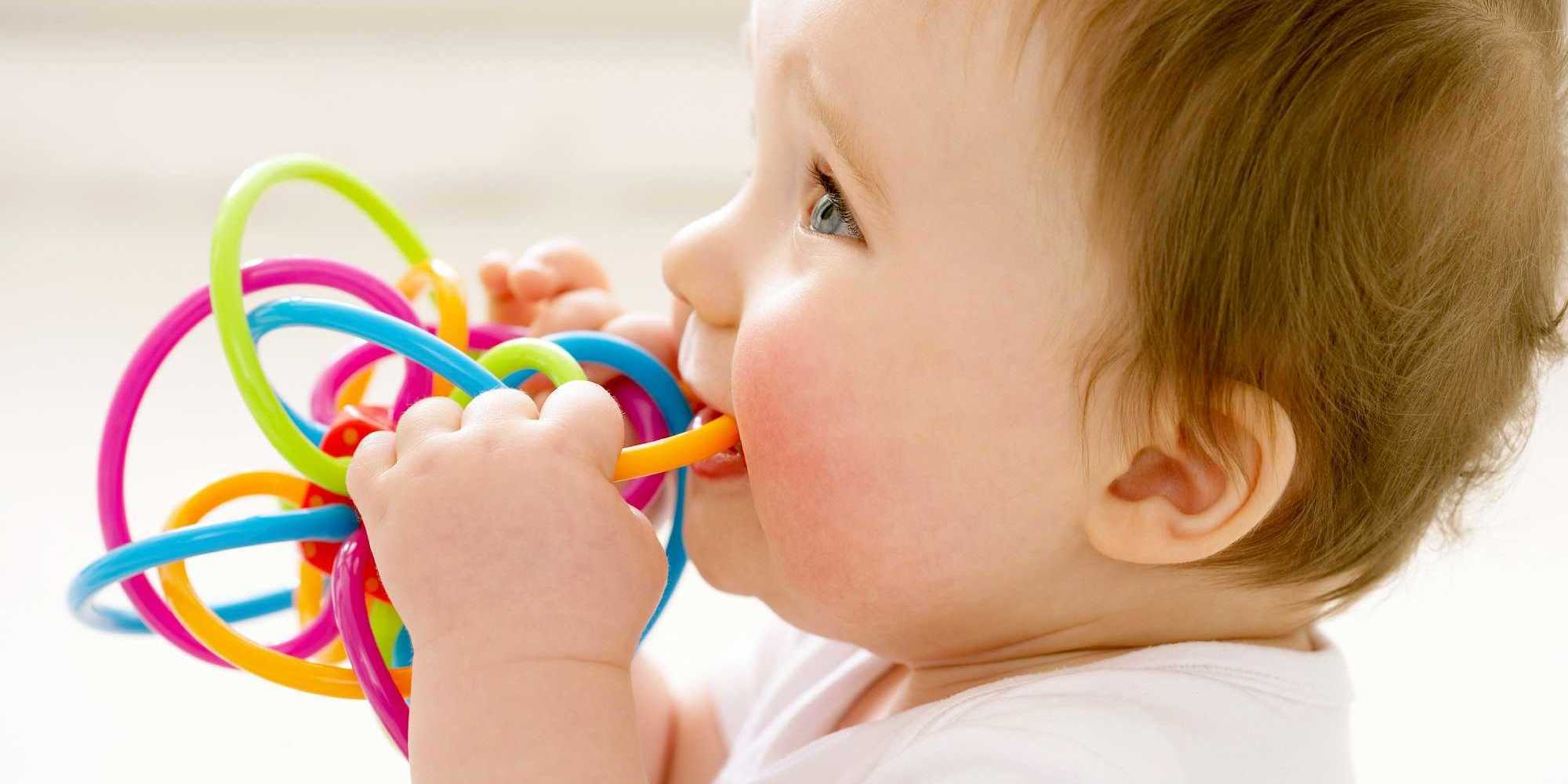
The emergence of a baby’s first teeth marks an exciting developmental stage, yet it often brings with it a period of discomfort that can test the patience of both infants and their caregivers. While the process is entirely natural, the act of a tooth pushing through delicate gum tissue can cause varying degrees of pain, irritation, and fussiness. In an effort to alleviate their little one’s distress, many parents instinctively seek out gentle, non-pharmacological approaches. The appeal of natural remedies for teething pain stems from a desire to provide comfort without resorting to medications unless absolutely necessary. This exploration into alternative methods is driven by a commendable instinct to soothe a child with minimal intervention, utilizing what nature or simple household items can offer. Understanding which natural remedies are genuinely effective and, crucially, safe, requires a discerning eye, separating time-honored traditions from those lacking evidence or even posing potential risks. It’s about finding that delicate balance between providing genuine relief and ensuring the utmost safety for a developing infant.
Gentle Pressure and Counter-Pressure: A Simple Soothing Technique
One of the most immediate and accessible methods for providing relief is through gentle pressure and counter-pressure, a simple soothing technique that can work wonders. When a tooth is trying to break through the gum, applying light, firm pressure to the affected area can counteract the upward pressure of the tooth, offering a sense of relief. Parents can achieve this by gently massaging the baby’s gums with a clean finger. The gentle friction can also help the tooth emerge more easily. Another effective approach is to offer a clean, chilled (not frozen solid) teething toy or a soft, damp washcloth that has been cooled in the refrigerator. The coolness helps to numb the gums, while the baby’s chewing action provides self-administered counter-pressure. Ensuring these items are consistently clean and free from sharp edges is paramount. This manual pressure is a fundamental response to the discomfort, often providing immediate, albeit temporary, relief, making it a cornerstone of a simple soothing technique for teething pain.
Chilled Items for Oral Comfort: Cooling Down Irritated Gums
Utilizing chilled items for oral comfort is a widely accepted and often effective way of cooling down irritated gums. The cold temperature helps to numb the sore area, reducing inflammation and discomfort. Options abound, from specialized teething rings that can be cooled in the refrigerator (never the freezer, as frozen items can be too hard and potentially damage delicate gum tissue) to a chilled, wet washcloth. Some parents even find success with a chilled spoon (again, not frozen), carefully placed on the gums. The key is to ensure the item is cold enough to provide relief but not so cold that it causes discomfort or adheres to the baby’s skin. Always supervise a baby with any chilled item to prevent choking hazards, especially with washcloths that might unravel. The simple principle of applying cold to an inflamed area is a time-tested method, offering a quick and non-invasive way of cooling down irritated gums, providing a welcome respite for a fussy baby.
Dietary Adjustments: Softer Foods and Cool Liquids
Considering dietary adjustments can significantly help by providing softer foods and cool liquids. For babies who have started solids, offering pureed or mashed foods that are cool or at room temperature can be more comfortable than warm, textured meals. Yogurt, applesauce, pureed fruits, or chilled vegetable mashes are often well-received. Avoiding highly acidic or spicy foods during teething is also advisable, as they can further irritate already sensitive gums. For infants who are still primarily on milk, offering breast milk or formula more frequently, or in slightly cooler temperatures, can be soothing. Increased drooling during teething can also lead to mild dehydration, so ensuring adequate fluid intake is important. Offering sips of cool water (for babies older than 6 months) between feedings can help maintain hydration and rinse the mouth. These simple dietary adjustments are not just about ease of eating but also about actively providing comfort, making meal times less of a struggle during this uncomfortable phase.
Safe Teething Toys: Exploring Textures and Materials
When selecting items for oral exploration, focusing on safe teething toys means exploring textures and materials carefully. The market is saturated with options, but choosing ones made from non-toxic, BPA-free, and food-grade silicone or natural rubber is crucial. Toys with varied textures, such as bumps, ridges, or soft bristles, can provide different sensations against the gums, allowing the baby to find what offers the most relief. Ensuring the toy is appropriately sized to prevent choking hazards is paramount; it should be large enough that it cannot be swallowed. Regular cleaning of teething toys is also vital to prevent bacterial buildup. Some innovative designs even allow for freezing small amounts of breast milk or formula inside, offering a dual benefit of cold and familiar taste. The right teething toy isn’t just a distraction; it’s a tool designed to provide targeted relief, making exploring textures and materials a practical approach to soothing sore gums.
The Power of Distraction: Shifting Focus from Pain
Sometimes, the best remedy isn’t a direct treatment for pain, but rather the power of distraction, which involves shifting focus from pain. A fussy, teething baby might benefit simply from having their attention redirected. Engaging them in play, offering cuddles, singing songs, or reading a book can sometimes be enough to help them forget about their discomfort, even for a short while. Taking them for a walk outdoors, a change of scenery, or even a warm bath can also be effective in shifting focus from pain. The warmth of a bath can be generally soothing, and the novelty of a new environment can divert their attention. While distraction won’t eliminate the underlying pain, it can certainly help manage the fussiness and irritability associated with it, allowing both baby and parent a much-needed break from the constant discomfort, proving that sometimes, simply diverting attention is a potent remedy.
The Comfort of Cuddles: Emotional Support for Discomfort
Beyond physical methods, the simple act of the comfort of cuddles provides invaluable emotional support for discomfort. Teething can be a bewildering and frustrating experience for a baby, and parental presence and affection can offer immense reassurance. Holding them close, rocking them gently, or simply offering extra snuggles can provide a sense of security and calm. The warmth of a parent’s body and the sound of a comforting voice can be incredibly soothing. This emotional connection helps to regulate their nervous system and can reduce their perception of pain. Sometimes, a baby just needs to feel safe and loved to cope with their discomfort. This often-overlooked aspect of care highlights that treating teething pain isn’t solely about physical remedies; it’s also about addressing the emotional needs of a distressed child, underscoring the profound importance of emotional support for discomfort during this challenging phase.
Amber Teething Necklaces: A Note of Caution
While often marketed as natural remedies, it’s crucial to include amber teething necklaces with a note of caution. Despite their popularity and claims of releasing succinic acid to reduce pain, there is no scientific evidence to support their efficacy. More importantly, they pose significant safety risks. The American Academy of Pediatrics and other medical organizations strongly advise against their use due to the risk of choking and strangulation. The beads can break off and be swallowed, or the necklace itself can wrap around a baby’s neck during sleep or unsupervised play. Prioritizing safety over unproven remedies is paramount when it comes to infant care. Therefore, while seemingly “natural,” the potential dangers far outweigh any purported benefits, making a note of caution essential when discussing such products. Parents should always consult with their pediatrician or dentist regarding the safety and effectiveness of any purported teething remedy.
Addressing Increased Drooling: Preventing Skin Irritation
A common side effect of teething is excessive drooling, so addressing increased drooling is important for preventing skin irritation. The constant moisture around a baby’s mouth, chin, and neck can lead to a rash or chapping. Keeping these areas clean and dry is key. Gently wipe away drool frequently with a soft cloth, rather than letting it sit on the skin. Applying a thin layer of a protective balm, such as petroleum jelly or a pediatrician-recommended barrier cream, can help create a shield against moisture and irritation. Dressing the baby in bibs can also help absorb excess drool, preventing it from saturating clothing and irritating the chest area. This simple preventive care helps avoid secondary skin issues that can add to a baby’s discomfort, making preventing skin irritation a crucial component of overall teething care.
Oral Hygiene During Teething: Continuing Best Practices
Even amidst discomfort, oral hygiene during teething means continuing best practices. While the gums might be sensitive, it’s important not to neglect oral care. Gently wiping the gums and any erupted teeth with a clean, damp cloth or a soft infant toothbrush twice a day can help remove bacteria and food particles. This not only keeps the mouth clean but also can provide a gentle massage that might alleviate some discomfort. Introducing these cleaning routines early helps babies become accustomed to them, setting the stage for lifelong good oral hygiene habits. Skipping oral hygiene during teething due to perceived sensitivity can lead to plaque buildup and the formation of cavities, even in newly erupted teeth. Therefore, continuing best practices ensures that despite the temporary discomfort, the foundation for long-term dental health remains strong.
Professional Guidance: When to Consult a Pediatrician
Despite the array of natural approaches, recognizing professional guidance is essential, understanding when to consult a pediatrician. While most teething discomfort is manageable at home, certain symptoms warrant medical attention. If a baby develops a high fever (100.4°F/38°C or above), persistent diarrhea, vomiting, severe loss of appetite, an unusual rash, or seems unusually lethargic or irritable, it’s crucial to contact a doctor. These symptoms are not typically associated with teething and could indicate an underlying illness that requires diagnosis and treatment. Similarly, if gum swelling appears excessively severe, discolored, or seems infected, a dental professional should be consulted. Trusting your parental instincts is important, but knowing when to consult a pediatrician ensures that any serious health concerns are addressed promptly and effectively, prioritizing the child’s overall well-being.
